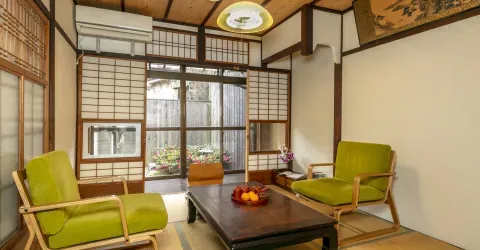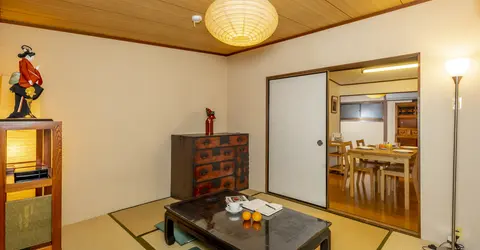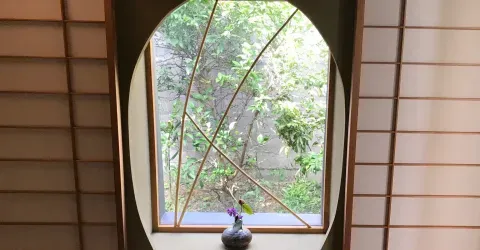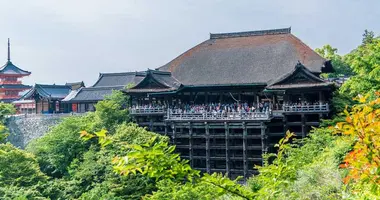Kyoto public bath houses sento: a relaxing cultural experience
- Published on : 26/06/2024
- by : Japan Experience
- Youtube
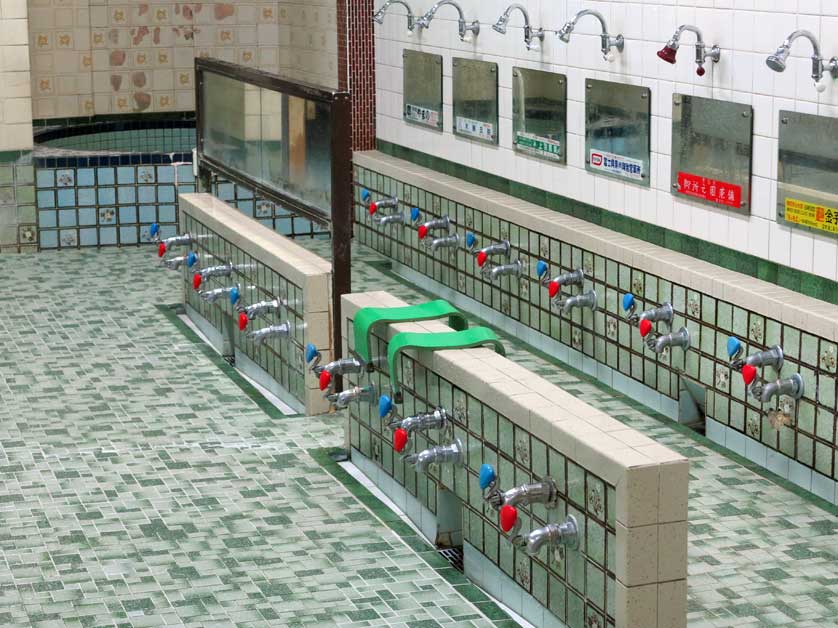
Kyoto Public Bathhouse - sento
Kyoto, a city steeped in tradition, is home to numerous public bath houses known as sento. These establishments offer a unique glimpse into Japanese bathing culture and provide a relaxing retreat for both locals and visitors. Sento have been an integral part of Japanese daily life for centuries, serving as communal spaces for cleansing and socializing. In Kyoto, many historic sento still operate, preserving the city's rich bathing heritage. From traditional wooden structures to more modern facilities, Kyoto's sento offer a diverse range of bathing experiences that cater to all preferences.
Understanding sento: the history and culture of Japanese public baths
The origins of sento in Japan can be traced back to the 6th century when Buddhist temples introduced purification rituals. These practices aimed to cleanse both body and spirit, laying the foundation for Japan's bathing culture. During the Edo period (1603-1868), sento experienced a significant boom, becoming an essential part of daily life for common people.
In Kyoto, the tradition of public bathing has deep historical roots. The city's large student population and cold winters have contributed to the survival and prosperity of many sento. Additionally, the tight-knit community atmosphere of Kyoto's traditional neighborhoods has helped maintain the social aspect of public bathing.
Sento differ from onsen (hot springs) in that they typically use heated tap water rather than naturally occurring hot spring water. However, both serve the important function of providing a space for relaxation and community bonding. In recent years, some sento have evolved into "super sento" with additional amenities like saunas, restaurants, and outdoor baths, while others maintain a more traditional atmosphere.
Top sento experiences in Kyoto
Kyoto offers a variety of sento experiences, from historic bathhouses to modern facilities. Here are some of the most notable sento in the city:
1. Funaoka Onsen: Built in 1923, this historic sento is known for its stunning architecture and intricate wood carvings. It features a range of baths, including an electric bath and an outdoor bath with a garden.
2. Daikoku-yu: Located near Shugakuin Station, this long-running sento offers a welcoming atmosphere and spacious bathing areas. It's particularly popular among foreign students and visitors.
3. Higashiyama-yu: This old-school sento near Hyakumanben features retro décor and a diverse clientele. It's known for its relaxed atmosphere and occasional beer-drinking patrons.
4. Idutsu-yu: Located southwest of the Imperial Palace, this traditional sento boasts unique tile work depicting Alpine scenes. It's a great example of a well-preserved Showa-era bathhouse.
5. Sakura-yu: Established in 1919, this century-old sento offers a glimpse into Taisho-era bathing culture. Its central location makes it convenient for tourists exploring downtown Kyoto.
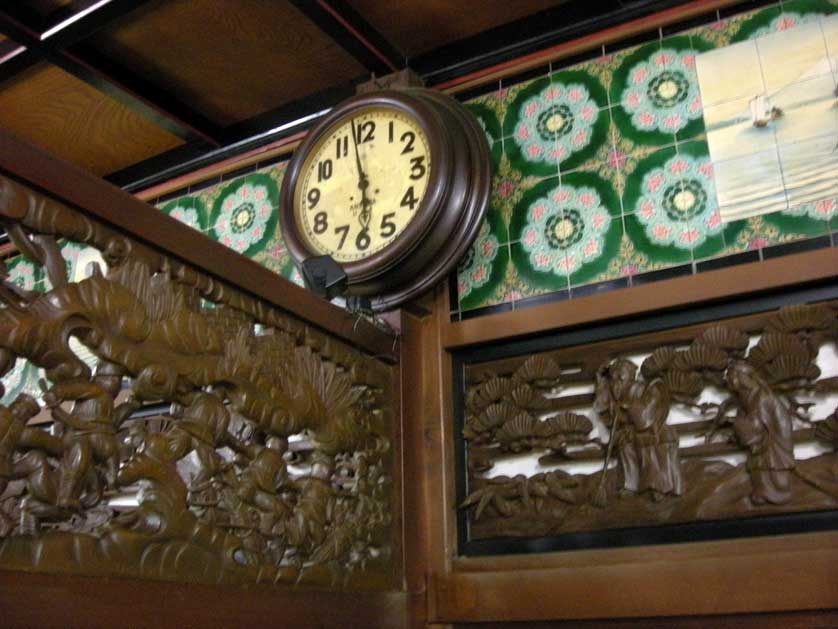
Funaoka Onsen, Kyoto
What to expect at a Kyoto sento: facilities and etiquette
When visiting a Kyoto sento, it's important to familiarize yourself with the facilities and proper etiquette. Most sento provide the following amenities:
- Separate bathing areas for men and women
- Large communal baths of varying temperatures
- Shower stations for washing before entering the baths
- Sauna or steam room (in some facilities)
- Changing areas with lockers
- Vending machines for drinks and toiletries
To ensure a pleasant experience for everyone, follow these essential etiquette guidelines:
- Remove all clothing in the changing area and store it in a locker
- Wash thoroughly at the shower stations before entering the baths
- Bring a small towel for modesty, but don't let it touch the bath water
- Refrain from loud conversations and disruptive behavior
- Don't use your phone or camera in the bathing areas
- Rinse off before leaving the bathing area
By following these guidelines, you'll show respect for local customs and ensure a more enjoyable experience for yourself and others.
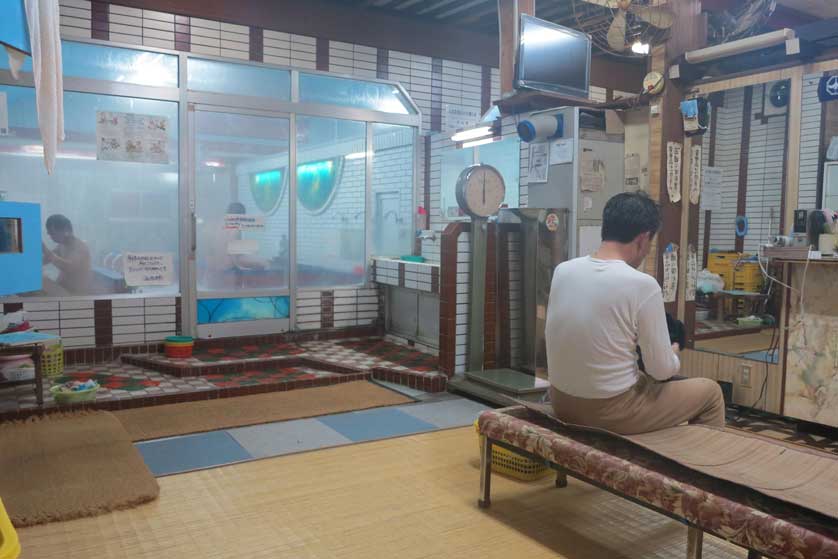
Higashiyama-yu, Hyakumanben, Kyoto
The therapeutic benefits of sento bathing
Soaking in a sento offers numerous health benefits beyond simple relaxation. The practice of regular bathing in hot water has been shown to:
- Improve blood circulation and cardiovascular health
- Reduce stress and promote better sleep
- Alleviate muscle and joint pain
- Boost the immune system
- Improve skin health and appearance
Many sento in Kyoto offer additional therapeutic features such as jet baths, which can help massage sore muscles, and cold plunge pools, which can invigorate the body and improve circulation. Some facilities also provide medicinal baths infused with herbs or minerals believed to have healing properties.
The act of bathing in a sento can also have positive effects on mental health. The communal nature of the experience can help combat feelings of loneliness and isolation, while the ritual of cleansing can be deeply meditative and calming.
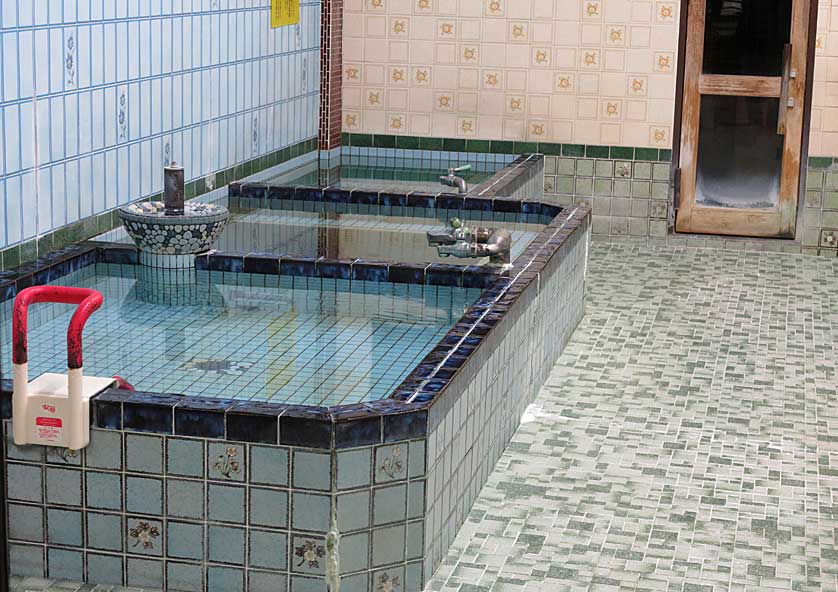
Idutsu-yu bath house in Kyoto
Sento as a social hub: connecting with locals and fellow travelers
One of the unique aspects of sento culture is its role as a social gathering place. In Kyoto, where community ties remain strong, sento continue to serve as important hubs for local interaction. Visiting a sento provides an opportunity to experience everyday Japanese life and potentially strike up conversations with locals.
For travelers, sento can be an excellent place to meet fellow visitors and exchange tips and stories. Many sento in Kyoto, such as Daikoku-yu, are popular among international students and tourists, creating a diverse and welcoming atmosphere.
Some sento have even begun hosting special events and activities to foster community engagement. These may include art exhibitions, music performances, or cultural workshops, adding an extra dimension to the bathing experience.
Remember that while socializing is encouraged in the changing and resting areas, it's important to maintain a quiet and respectful atmosphere in the bathing areas themselves.
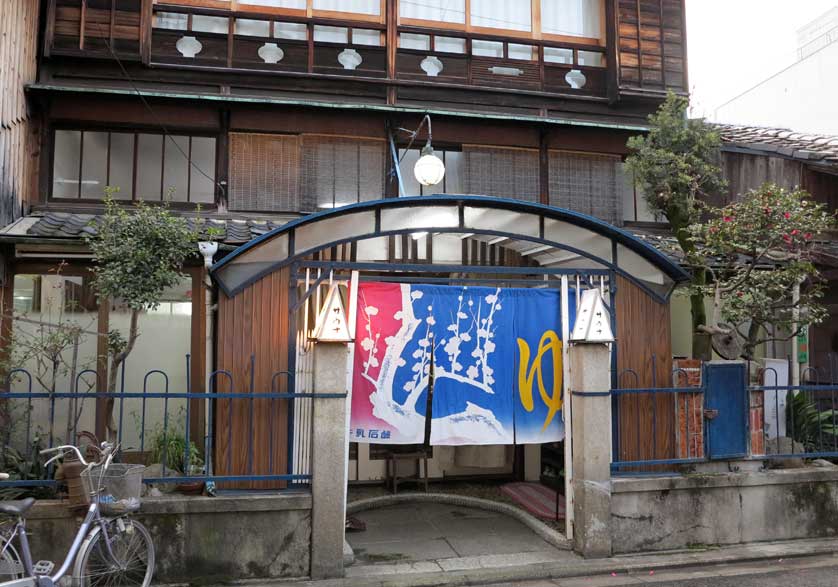
Entrance to Sakura-yu
Combining sento visits with Kyoto sightseeing
Incorporating sento visits into your Kyoto itinerary can enhance your overall travel experience. Many sento are conveniently located near popular tourist attractions, making it easy to include a relaxing soak in your day of sightseeing.
For example, after exploring the historic Imperial Palace, you could unwind at nearby Idutsu-yu. Or, after visiting Chionji Temple, you might enjoy a soak at Higashiyama-yu Onsen.
Some sento, like Kinugasa Onsen near Myoshinji Temple, offer additional amenities such as outdoor baths and saunas, making them destinations in their own right.
Consider timing your sento visits for the evening, after a day of walking and exploring. This can help soothe tired muscles and prepare you for a good night's sleep. Many sento are open until late at night, with some like Sakura-yu operating until midnight.
Practical tips for first-time sento visitors in Kyoto
For those new to sento culture, here are some practical tips to ensure a smooth and enjoyable experience:
- Bring your own toiletries and towels, or be prepared to rent or purchase them at the sento
- Carry enough cash, as many sento don't accept credit cards
- Be aware that most sento don't allow people with tattoos to enter due to historical associations with organized crime
- If you have long hair, bring a hair tie to keep it out of the bath water
- Consider visiting during off-peak hours for a more relaxed experience
- Look for sento that offer English information or are foreigner-friendly, such as Daikoku-yu
To find sento locations and information, you can use the website www.kyo1010.com (in Japanese), which provides a comprehensive listing of Kyoto's public baths. Many sento are easily accessible by city buses or subway.
By following these tips and embracing the sento experience, you'll gain a deeper appreciation for Japanese bathing culture and create lasting memories of your time in Kyoto. Whether you're seeking relaxation, cultural immersion, or simply a refreshing break from sightseeing, Kyoto's sento offer a unique and rewarding experience for all visitors.
